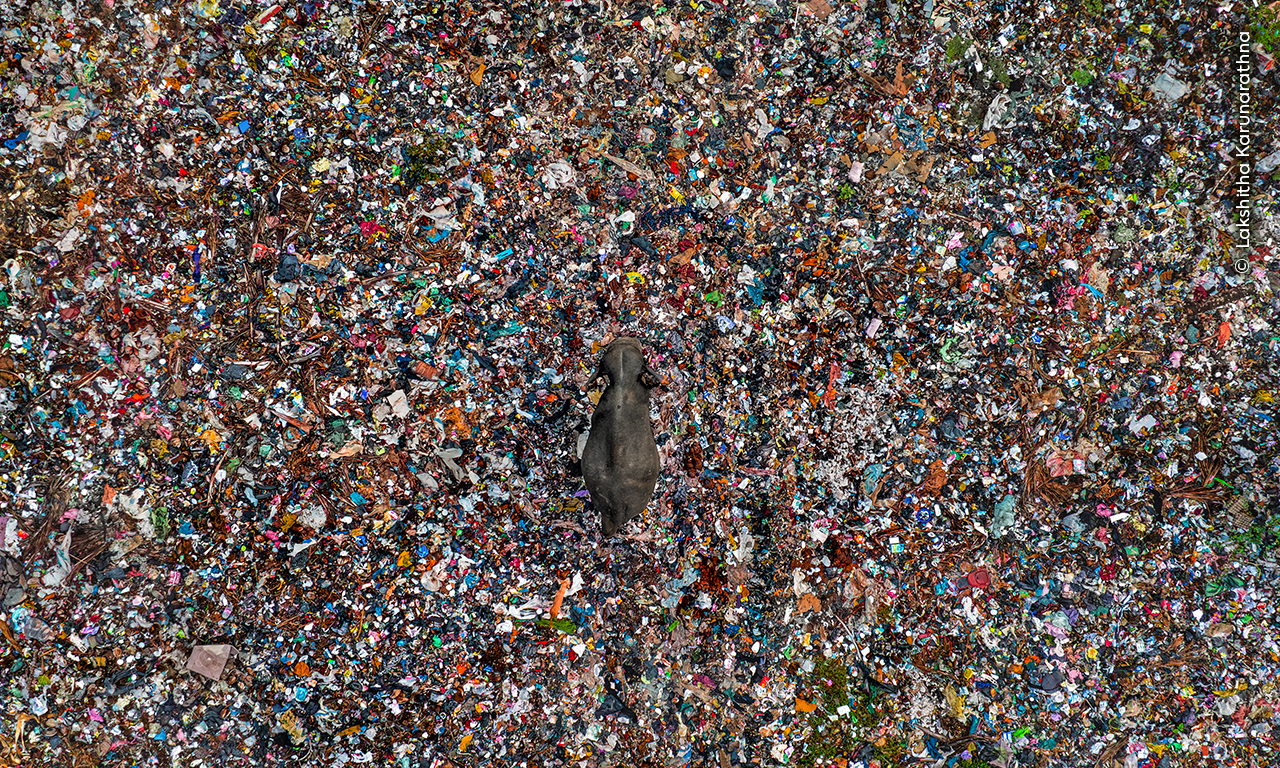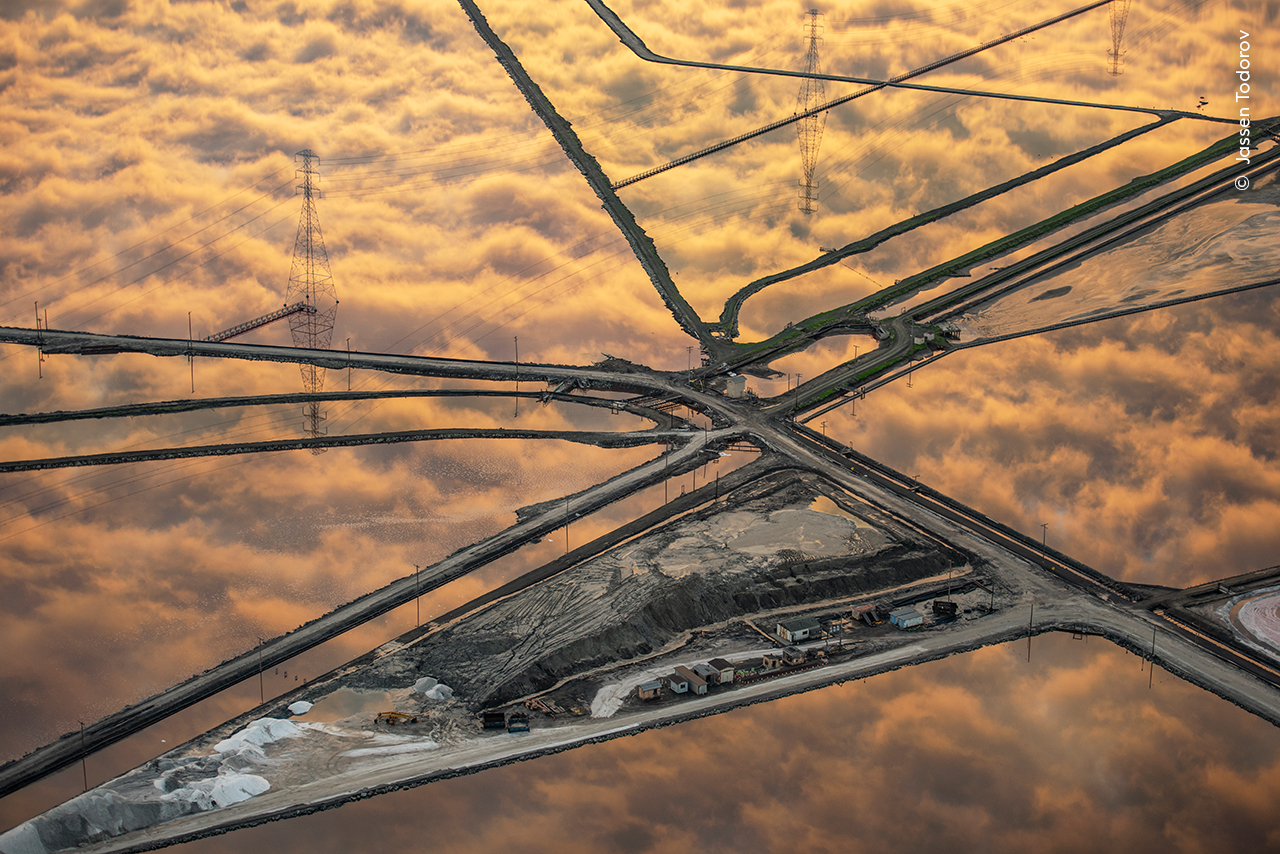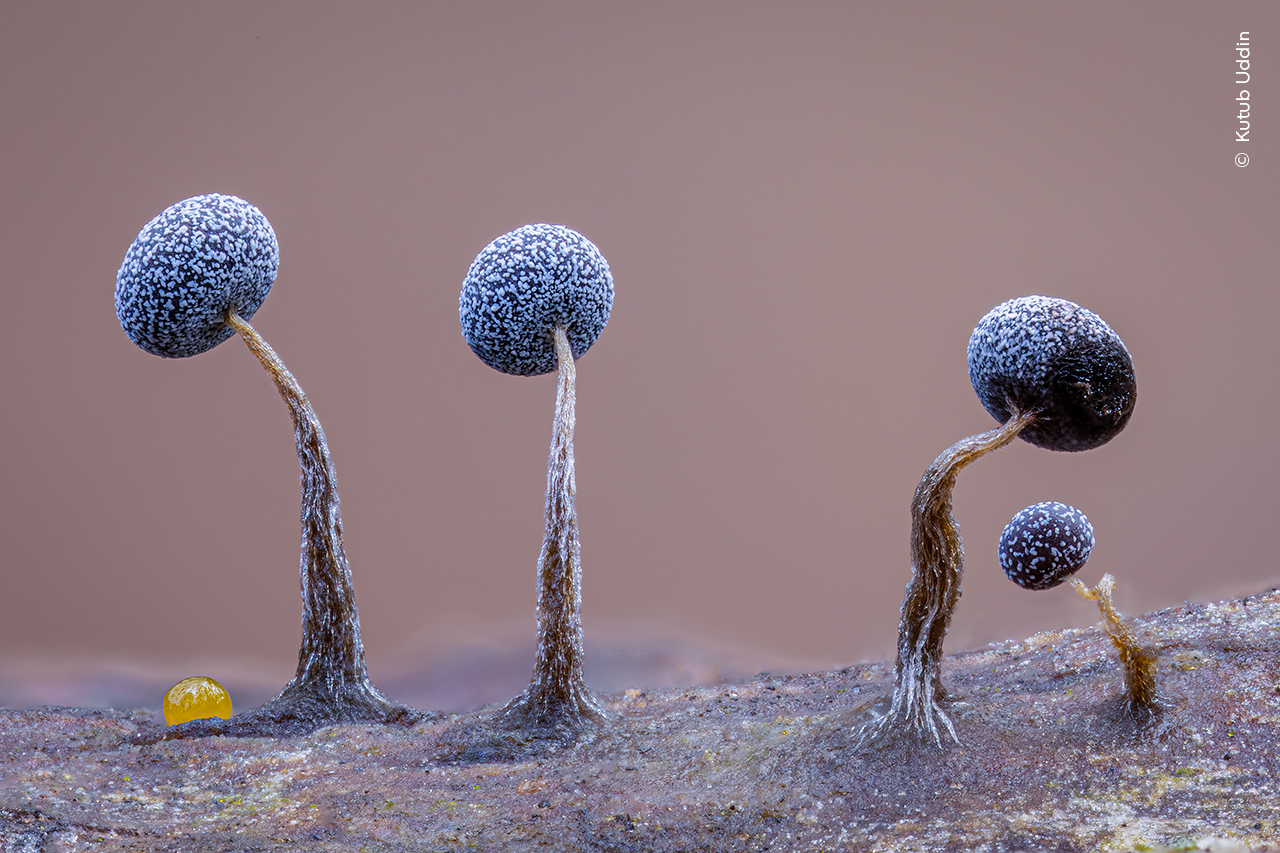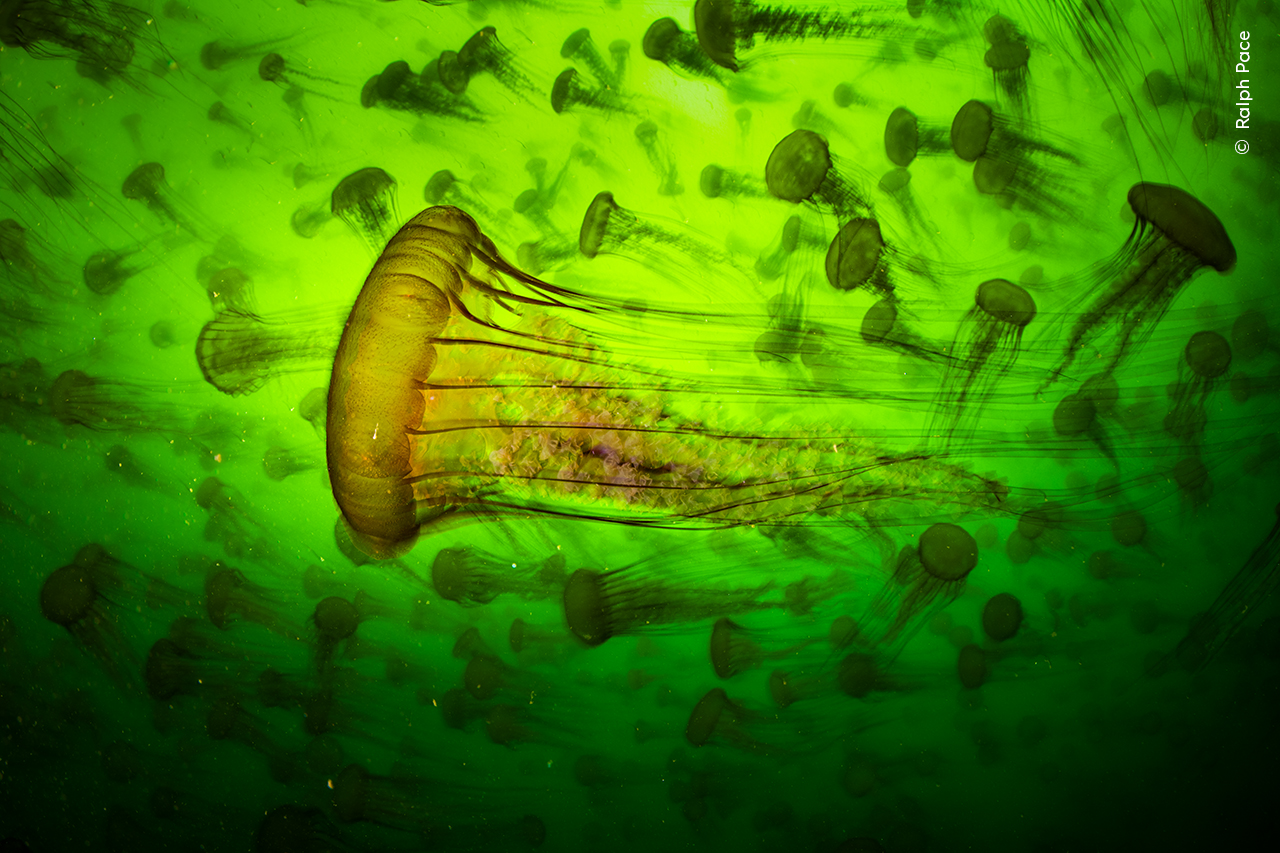Wildlife Photographer of the Year (WPOTY) is back with a bang for its 61st year, having received a record-breaking 60,636 entries that include stunning images taken across the globe, including a bizarre slime-based family portrait, a stark look at the impact of landfill sites, and a wasp that appears to have developed magical abilities.
Winners of the awards will be announced on October 14, but for now, you can have a sneak peek at the Highly Commended images awarded so far.
Special Delivery
If you only took a quick glance at the photograph above, it’d be easy to imagine that Bidyut Kalita had captured a strange new wasp behavior that sees them give up on their wings and adopt broomstick-based flight instead. But while the insect in this photo might be aptly named the potter wasp, there’s no magic going on here. In fact, this wasp is carrying a caterpillar to its eventual death.
Potter wasps build chambers out of mud in which to lay their eggs, then pack the nest with paralyzed caterpillars for the larvae to snack on once they hatch. Savage? Sure. Impressive? Most definitely.
Toxic Tip

Plastic waste can pose a serious threat to wildlife.
Image credit: Lakshitha Karunarathna/Wildlife Photographer of the Year
WPOTY often highlights the darker side in humanity’s relationship with the natural world, as captured by Lakshitha Karunarathna in this stark image of an Asian elephant walking through a waste disposal site in Ampara, Sri Lanka.
Herds regularly forage open landfill sites in this area, with devastating consequences; in 2022, it was reported that around 20 elephants had died over the previous eight years after consuming plastic waste at just one site in Ampara.
Clouds Of Gold

Golden hour once again coming through with the goods.
Image credit: Jassen Todorov/Wildlife Photographer of the Year
While this stunning image taken by Jassen Todorov looks as though the roads are floating amongst the clouds, this is simply an optical illusion. In fact, these are the famous salt ponds that cover parts of San Francisco Bay, reflecting the clouds above at sunset.
Something similar happens at Salar de Uyuni, the world’s biggest salt flat, which transforms into a vast natural mirror come the rainy season – also attracting many a photographer.
Slime Family Portrait

Icing dust-covered blueberries? No, and you don’t want to lick them to find out.
Image credit: Kutub Uddin/Wildlife Photographer of the Year
Is that a bunch of slightly odd-looking blueberries we can spy here? Nope – what we’re actually looking at is a close-up view of the reproductive parts of a slime mold, or as photographer Kutub Uddin describes it, a “bizarre family portrait”. Not so yummy now you know that, huh?
“Family portrait” is a pretty accurate description; a slime mold isn’t just one organism. Instead, it’s a community of single-celled organisms that band up when it’s time to find food and reproduce. Okay, the second part isn’t very family-like, but hey, Uddin did call it bizarre.
Jelly Smack Summer

Halloween came early with this one.
Image credit: Ralph Pace/Wildlife Photographer of the Year
How do you go about taking pictures of jellyfish? One important step is to slather on the petroleum jelly, according to Ralph Pace. The underwater and environmental photographer captured this eerie image of a group (or “smack”) of Pacific sea nettles (Chrysaora fuscescens) in Monterey Bay, California, with the jelly protecting any areas not covered by his wetsuit from their stings.
It’s a good plan; while these jellyfish aren’t dangerous to humans, they do deliver an unpleasant sting, which Pace says feels more like a bee sting than that of the stinging nettles they’re named after.
Wildlife Photographer of the Year is developed and produced by the Natural History Museum, London, where 100 images selected by the competition’s jury, including the ones shown above, will go on display from October 17, 2025, all the way through to July 12, 2026.
“Now in its sixty-first year, we are thrilled to continue Wildlife Photographer of the Year as a powerful platform for visual storytelling, showing the diversity, beauty and complexity of the natural world and humanity’s relationship to it,” said Dr Doug Gurr, Director of the Natural History Museum, in a statement sent to IFLScience.
“With the inclusion of our Biodiversity Intactness Index, this year’s exhibition will be our best combination of great artistry and groundbreaking science yet, helping visitors to become inspired to be advocates for our planet.”
If you fancy a shot at taking home a prize in next year’s competition, entries open on October 20, 2025. You can find out how to enter here.
Source Link: Wasp “Riding A Broomstick” Among Fantastic Finalists Of Wildlife Photographer Of The Year